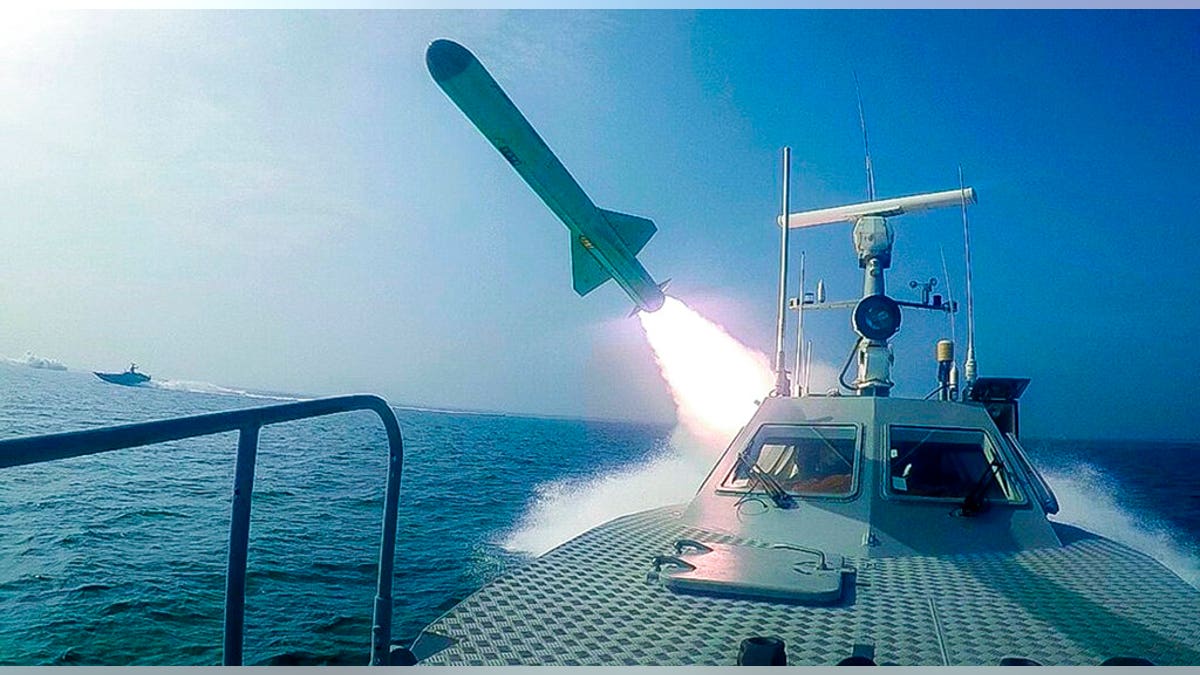Expert says Iran is trying to act tough by conducting live-fire drill on mock US carrier
The Islamic Republic of Iran conducted live-fire drills on a mock US aircraft carrier it moved into the Strait of Hormuz. U.S. Navy 5th Fleet Command has condemned the exercise. According to Lt. Col. James Carafano of the Heritage Foundation Iran is ‘acting tough.’
Iran's paramilitary Revolutionary Guard launched underground ballistic missiles Wednesday as part of a drill that targeted a replica American aircraft carrier in the Strait of Hormuz, signaling a show of power to the U.S., with whom they are already at odds.
BRITISH-AUSTRALIAN WOMAN JAILED IN TEHRAN MOVED TO IRAN'S NOTORIOUS AND REMOTE QARCHAK PRISON
“We have carried out the launch of ballistic missiles from the depths of the earth for the first time," Gen. Amir Ali Hajizadeh, commander of the Guard's aerospace division, told state TV. "That means without utilizing conventional launchpads, the buried missiles suddenly rip out of the earth and hit their targets precisely.”

Revolutionary Guard's speed boat fires a missile during a military exercise. Iranian commandos also fast-roped down from a helicopter onto a replica of an aircraft carrier in the exercise called "Great Prophet 14." (Sepahnews via AP)
Drone footage captured by the Guard showed two missiles blasting out from covered positions in the desert early Wednesday morning, with debris flying up into the air in their wake. The Guard did not identify the location of the launch, nor the missiles involved, but it seemed to be near central Iran's desert plateau.

Missiles are fired in a Revolutionary Guard military exercise. Iran's paramilitary Revolutionary Guard fired a missile from a helicopter targeting the mock-up aircraft carrier in the strategic Strait of Hormuz. (Sepahnews via AP)
Iran has developed and stored some of its ballistic missiles underground to protect them from being destroyed or seized by enemy countries.
The testing comes amid ongoing tension between Washington and Tehran, especially after the U.S. drone strike that killed top Iranian general Qassem Soleimani in January.
Photos of the drill-- entitled “Great Prophet 14"-- posted by Tasnim news agency depicted the American carrier in the shape of a casket with a set of crosshairs on it, with a caption quoting Supreme Leader Ayatollah Ali Khamenei pledging to seek revenge for the attack.

Revolutionary Guard's speed boats circle around a replica American aircraft carrier during a military exercise. (Sepahnews via AP)
CLICK HERE FOR THE FOX NEWS APP
Ballistic missile fire detected from the drill a day prior resulted in American troops being put on alert at Al-Dhafra Air Base in Abu Dhabi in the United Arab Emirates and Al-Udeid Air Base, the forward headquarters of the U.S. military’s Central Command in Qatar, the military said. Troops briefly sought cover during that time.
Both bases are hundreds of miles away from where Iran placed the replica aircraft carrier in the strait, the narrow mouth of the Persian Gulf through which 20 percent of all oil traded passes.
The Associated Press contributed to this report.





















